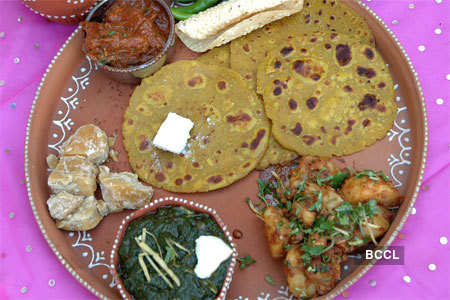Yet another dangerous challenge is doing the rounds on the internet. A mom finds videos on YouTube that tells kids to do harmful things to themselves or others through MOMO Challenge. I have known for quite some time that YouTube if not used in limit has the potential to be very harmful to kids and their mindset. At the end of the day, it is a tool to be wielded by the person holding it. As a gadget or as a weapon.
Using YouTube as a Crutch for Education and Baby Sitting

It happens often with new parents and it was with me also. When he was small, I let my son watch the fun animated videos on YouTube. Keeping him occupied, it was super convenient for me to work around the house or just do my thing. Soon he was watching kids unboxing videos and being adamant that he wants the same toys. He was so attracted to it all!
We observed the change in his behavior just in time, I think. Ask him to stop watching and he would revolt!
We decided to stop giving him the device then. Any videos online were watched only once a week, or as a treat for doing something that we couldn’t get them to do otherwise. Till the day I saw him watching a video on YouTube-Kids where Spiderman and Elsa were pregnant and talking about babies. I went online and found that this was very common where toys would talk about adult topics.
That was the last time we let kids have Youtube in their hands.
From then on, any video would only be streamed on TV and only those that I had researched.

Affect of Online Propaganda As Kids Get Older
But it doens’t end there. Even with those videos streamed, the advertising certainly become a bane during shopping as kids request for things that we have never even heard of. It breeds materialism, at such an early age. Instead of advertising to parents, now stores have direct access to little children. Which is why we need to talk to them early about having enough and buying only what we really need.
But it isn’t only toys. The propaganda can go in deep.
One day, we were driving around and my son, then 7, spotted a political poster. He repeated verbatim the negative campaigning we had seen on YouTube before you can skip ad. We had laughed over how often those ads keep coming up, but it had not occurred to me how much of an impact they were having on my family’s vision of the world we lived in.
Here was my son repeating something he had no idea about, without any proof himself. How horrendous it is to have the whole coming generation blatantly influenced so negatively!
The Many Ways YouTube is Harmful To Kids

Idle Time Consumption
In the time a child could be creating or discovering the outside or their own thought processes, they are busy consuming content that may or may not be productive towards their growth.
Instant Gratification
YouTube gives you what you want at the click of a button. It gives them a false sense of adrenaline rush to get what they want the moment they want it. Life does not work that way and this is disturbing.
Dangerous Hidden and Not so Hidden Propaganda
As seen with the recent discovery of the MOMO Challenge and earlier when they were showing adult content through kids’ videos, these challenges and trends will keep happening again and again people find ways to influence children in a disgusting or subtle way. Some ways are clearly obvious, others not so much.
Peer Pressure
In a time when we want them more than ever to be able to stand their ground in the face of external influence, we let them watch videos of advertisements of kids playing video games or unboxing toys or just playing pranks. And of course once, they start looking up to a certain YouTube star, they want to use what they are using and doing.
Unregulated CONTENT
In a time when we should actually be very cautious about what we let our children watch and the age rating of something, instead we let them have a gadget and watch whatever their little hearts lean towards. Which can possibly have anything within. It is so unfortunate though now, that they let free on a platform that is totally unregulated, with videos being uploaded every few minutes.
Distorted Thinking
The constant instant gratification and change in video watching as they scroll through different topics makes kids unable to learn to focus. They learn way more than their little minds can comprehend and that leads to distracted and distorted view of the real world.
Reality TV for Kids
This is my personal peeve since I do not approve of any reality television. Even though most people know it is scripted, to show people in such a vulnerable and bad lighting in the guise of popular television is just sad. It makes us all so cynical of the world view for it is real life but people play games with each other’s emotions for money or fame. And what is YouTube but reality television for children.
Emotional Impact
As I mentioned my personal experience, I could visibly see my son’s behaviour change for the worse and it was clear to me the impact the incessant scrolling was having on him. And I believe that goes a long way to show the impact on any child for the above reasons. When they do not get their fix, they retaliate violently, which only grows.
Eye Strain
Very recently people have come across the harmful effects of screen time. Recently when getting my son glasses, the technician said get the expensive ones that help against gadget use. My answer was that my kids do not use gadgets that much yet.
How to Use YouTube Safely
No Personal Account for Kids
Please do not give little kids their own accounts. Yes, it avoids your personal account being flooded by kids videos but it is totally not needed for kids to feel in ownership for YouTube account. The moment kids feel in charge, they start watching whatever they feel like.
Clear Your Browser History
We are adults who sometimes click on things that are inappropriate. And that leads to YouTube showing videos that are similar in the suggested video section. Make sure to clear your browser history to ensure kids do not end up even watching a thumbnail that is inappropriate.

Make Kids Watch YouTube on TV
Anything they watch should be streamed via television through chormecast, roku, apple etc where everyone can see what is being consumed. Stay close and monitor often what kids are watching.
Make a Playlist
This is tedious but very important for your child’s safetly. Go through every video you plan to let them watch and make an approved playlist of the videos.
Talk to Kids About What to Watch and how to behave online
No matter how safe you be, it could still happen that they go to someone’s house and watch something inappropriate. With my son, I have told him he goes to people’s house to play, not to watch TV or play videos games. So when someone suggests to watch TV, it’s time to go home. Also, I have talked to my son about how important it to to behave appropriately online as it is just like in real life. With cyber bullying rampant, it is so much more important for kids to know early how to be online.
Download Control Apps
Mcafee safe family – Download this or any other app to keep an eye on what your child is doing online. You can track all your devices. My husband and I have the app in our phones and we can check which sites they are visiting and which videos they are watching on YouTube. You can block the sites from the app too.
Enable YouTube Safety Mode on computers
Go to the bottom of any YouTube page and turn Safety Mode on. (Learn how). Safety Mode won’t catch everything – even YouTube acknowledges this – but it will prevent some unsavory content from younger eyes. For example, with Safety Mode turned on you cannot watch the video titled “Call Me Maybe (Dirty Parody)”. The other nice thing about Safety Mode is that user comments are not immediately visible. You have to specifically click to view them. This is my favorite feature of Safety Mode. Sometimes the video itself is fine, but the comments are rude, mean, and totally inappropriate.
Set a Time or videos Limit
As with everything, moderation needs to be promoted within children to impart self control. Make sure they know not to exceed 20 mins of time or 3 videos or a pre decided limit.
Make Videos a Treat
In my home, video watching on YouTube on television is a treat that they get as a bonus when they achieved something.
Use outdoors, Books and Streaming sources Instead
All the things you find easy to do with YouTube, can just as easily be done with books. The local library and book stores are wonderful resources to provide your child for endless wonderment. All the shows your kids so love are easily available on Prime Video or Netflix or for free on PBS Kids or Disney. Create a love in your child for reading or let them spend time outdoors.
Don’t Fall for ” YouTube-Kids is safe “
No matter what, Youtube or any platform that is not controlled by moderators is open for unsafe content being uploaded onto it. In different ways. So make sure you do not give kids access to your gadget or online videos in the false notion that it is safe.
The only safe way for kids is to be constantly vigilant on what they are consuming, searching for what is appropriate content online and then making sure our children have only limited use.
What tips would you add to this? Comment below and share with other parents.

 Cart is empty
Cart is empty

































